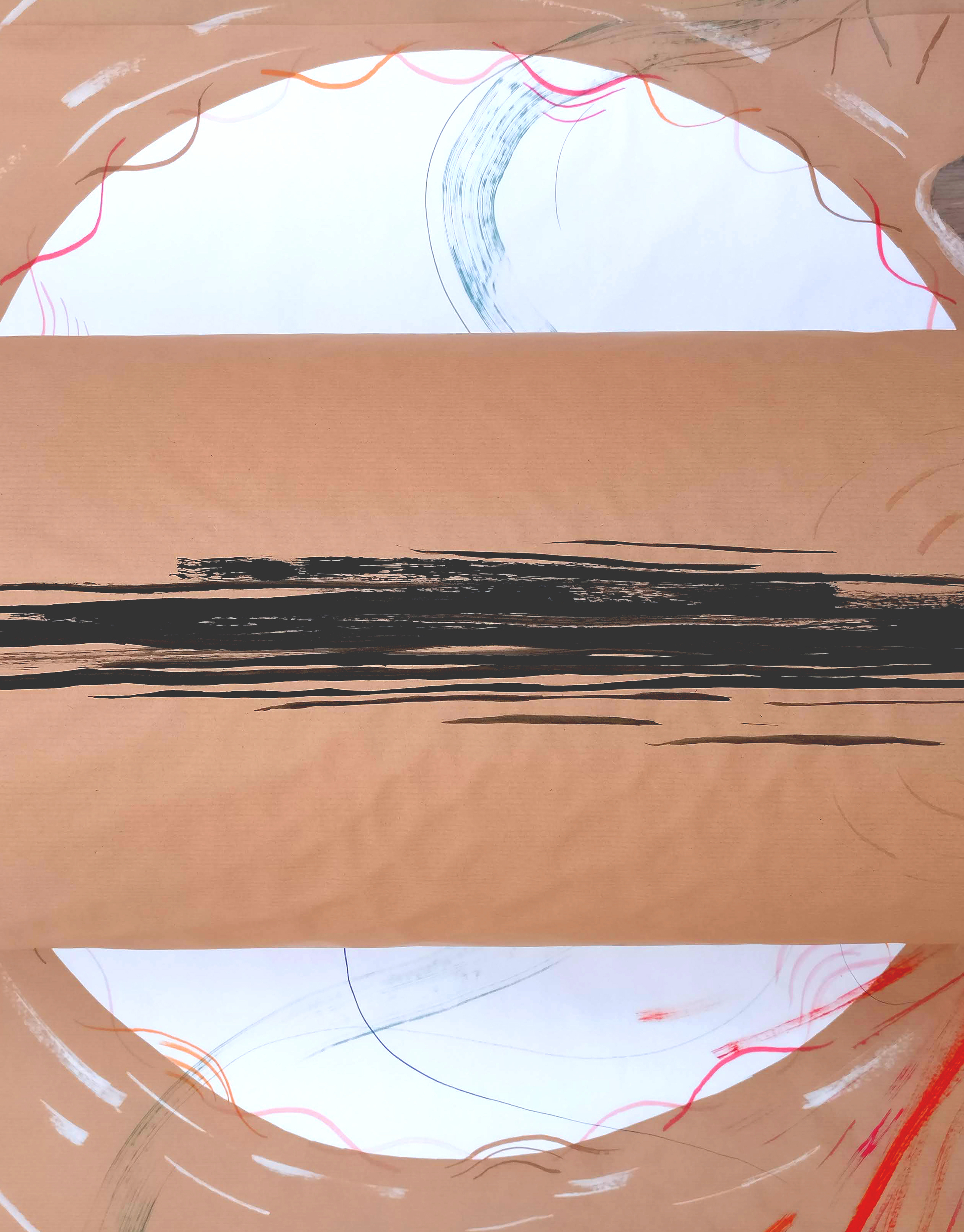The ‘Tender Narrator’ Who Sees Beyond Time:
A Framework for Trauma Integration and Healing
DOI:
https://doi.org/10.47061/jasc.v2i2.4937Keywords:
trauma, collective trauma, trauma integration, collective healing, presenceAbstract
While trauma occurs in separation, healing happens in relation, where the inner dynamics of voice and expression play an important role in narrating a traumatic experience. In her acceptance speech for the 2018 Nobel Prize in Literature, novelist Olga Tokarczuk envisioned a new form of a literary narrator, one who sees beyond a singular point of view to include the interrelatedness of the world and the interdependence of all beings. In this article, we present a framework for the integration of individual and collective trauma that is focused on creating safe, interactive group spaces for dialogue, group coherence building, reflection, and transformative practices. We illustrate the foundational role of narrative as part of this integration process in groups and programs led by the article’s co-author, teacher and international facilitator Thomas Hübl. We examine the stages of the narrative process in trauma integration, observing the potential shifts in points of view to listen for the voice of what Tokarczuk refers to as the “tender narrator”.We review the literature on trauma and collective trauma, and identify its impacts, especially its ubiquitous nature as part of every society’s social milieu. We also read part of a transcript of a dialogue focused on intergenerational and historical trauma, inviting us, as authors and readers, to participate in a practice of embodied witnessing. In presenting this framework, our intention as collaborators is to underline the urgency for healing individual and collective trauma through engaging in novel pathways of group experiential learning and integration.
References
Bortoft, H. (1996). The wholeness of nature: Goethe’s way of science (1st ed.). Floris Books.
Brave Heart, M. Y. H., Chase, J., Myers, O., Elkins, J., Skipper, B., Schmitt, C., Mootz, J., & Waldorf, V. A. (2020). Iwankapiya American Indian pilot clinical trial: Historical trauma and group interpersonal psychotherapy. Psychotherapy, 57(2), 184–196. https://doi.org/10.1037/pst0000267
Caruth, C. (1995). Trauma: Explorations in memory (1st ed.). Johns Hopkins University Press.
Caruth, C. (1996). Unclaimed experience: Trauma, narrative, and history. Johns Hopkins University Press.
Erikson, K. (1995). Notes on trauma and community. In C. Caruth (Ed.), Trauma: Explorations in memory (pp. 183–199). Johns Hopkins University Press.
Erikson, K. T. (1976). Disaster at Buffalo Creek. Loss of communality at Buffalo Creek. American Journal of Psychiatry, 133(3), 302–305. https://doi.org/10.1176/ajp.133.3.302
Herman, J. (1997). Trauma and recovery: The aftermath of violence–from domestic abuse to political terror. Basic Books.
Hirschberger, G. (2018). Collective trauma and the social construction of meaning. Frontiers in Psychology, 9. https://doi.org/10.3389/fpsyg.2018.01441
Holman, E. A., Jones, N. M., Garfin, D. R., & Silver, R. C. (2022). Distortions in time perception during collective trauma: Insights from a national longitudinal study during the COVID-19 pandemic. Psychological Trauma: Theory, Research, Practice, and Policy. Advance online publication. https://doi.org/10.1037/tra0001326
Hübl, T., & Avritt, J. J. (2020). Healing collective trauma: A process for integrating our intergenerational and cultural wounds. Sounds True.
Mollica, R. F., Brooks, R. T., Ekblad, S., & McDonald, L. (2014). The new H5 model of refugee trauma and recovery. In J. Lindert & I. Levav (Eds.), Violence and mental health (pp. 341–378). Springer. https://doi.org/10.1007/978-94-017-8999-8_16
Rinker, J., & Lawler, J. (2018). Trauma as a collective disease and root cause of protracted social conflict. Peace and Conflict: Journal of Peace Psychology, 24(2), 150–164. https://doi.org/10.1037/pac0000311
Substance Abuse and Mental Health Services Administration (SAMHSA) (2014). Concept of Trauma and Guidance for a Trauma-Informed Approach. Substance Abuse and Mental Health Services Administration. HHS Publication No. (SMA) 14-4884. https://store.samhsa.gov/product/SAMHSA-s-Concept-of-Trauma-and-Guidance-for-a-Trauma-Informed-Approach/SMA14-4884
Scharmer, O., & Hübl, T. (2019, Winter). Collective trauma and our emerging future. Kosmos Journal for Global Transformation. https://www.kosmosjournal.org/kj_article/collective-trauma-and-our-emerging-future/
Shridhare, L. (2020a, Dec. 3). Collective action for collective healing. Harvard Gazette. https://news.harvard.edu/gazette/story/2020/12/moving-from-individual-to-collective-healing/
Shridhare, L. (2020b, June 17). Collective trauma: Harvard longwood campus workshops explore trauma, resilience. Harvard Medical School News. https://hms.harvard.edu/news/collective-trauma
Siegel, D. J. (2020). The developing mind: How relationships and the brain interact to shape who we are (3rd ed.). The Guilford Press.
Silver, R. C., Holman, E. A., & Garfin, D. R. (2020). Coping with cascading collective traumas in the United States. Nature Human Behaviour, 5(1), 4–6. https://doi.org/10.1038/s41562-020-00981-x
Siobhan, A. (2020, June 2). Transgenerational trauma: The legacy of war and conflict. Foreign Affairs Review. https://www.foreignaffairsreview.com/home/transgenerational-trauma-the-legacy-of-war-and-conflict
Sunitha, L. (2018). Praxis intervention: An alternative approach to development. International Journal of Science and Research, 7(7), 839–841.
Taylor, M. (2020). Collective trauma and the relational field. The Humanistic Psychologist, 48(4), 382–388. https://doi.org/10.1037/hum0000215
Thomson, G. (2021). Collective healing: Towards a conceptual framework. Genocide Studies and Prevention, 15(3), 33–48. https://doi.org/10.5038/1911-9933.15.3.1843
Tokarczuk, T. (2019, Dec. 7). The tender narrator. [Nobel Prize lecture, transcript]. https://www.nobelprize.org/prizes/literature/2018/tokarczuk/lecture/
Tzu, L., & Mitchell, S. (2006). Tao Te Ching: A new english version. Harper Perennial Modern Classics.
van der Kolk, B., & van der Hart, O. (1995). The intrusive past: The flexibility of memory and the engraving of trauma. In C. Caruth (Ed.), Trauma: Explorations in memory (pp. 158–183). John Hopkins University Press.
Zahavi, D. (2019). Phenomenology: The basics (1st ed.). Routledge.
Downloads
Published
How to Cite
Issue
Section
License
Copyright (c) 2022 Thomas Hübl, Lori Shridhare

This work is licensed under a Creative Commons Attribution 4.0 International License.


